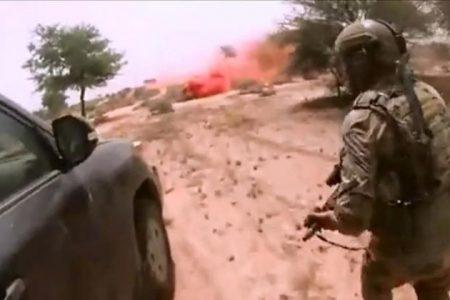
Pentagon believes that Nigerian villager tipped off ISIS militants the location of the US army forces
The US military suspects that residents of a nearby Nigerien village colluded with the Daesh-affiliated ambushers that killed four Americans and four Nigerien troops at the beginning of October. The joint forces stopped in the village several hours before the ambush, and it is believed that a resident of the town may have alerted the militants.
A senior defense official, speaking on condition of anonymity to Stripes, said that a dozen US troops and about 30 Nigeriens were patrolling an area close to the Niger-Mali border.
They were assisting a separate US commando team in their hunt for a senior member of al-Qaeda in the Islamic Maghreb (AQIM) believed to be operating in the area. AQIM, the North African branch of al-Qaeda, has perpetrated bloody terrorist acts such as the 2016 assault on a hotel and restaurant in Ouagadougou, Burkina Faso, that left 30 civilians dead.
The assignment was routine enough, according to the Pentagon: Joint Staff Director Lt. Gen. Kenneth McKenzie told reporters earlier in October that US-Nigerien forces had “done 29 patrols without contact over the previous six months or so.”
The patrollers found that the AQIM officer had left the area, and so they began to collect evidence where he had been last seen to potentially determine where he had gone. Because engagement seemed unlikely, the official said, the troops were on low alert.
The next morning, the Nigerien-American joint patrol stopped at a village called Tongo-Tongo that is about 50 miles north of Niamey. The troops resupplied and met with tribal leaders, as a leader of a local militia who had pledged his allegiance to Daesh was thought to have been there in the past.
Speaking to ABC News, a US soldier who survived the ambush said that a village elder was “definitely stalling as long as he could to keep us there.” The survivor claimed that the elder showed them his entourage, a child with an illness, and even a “goat [that] he wanted to prepare for them.”
According to Stripes’ source, it’s at this point that a village resident was likely tipping off the Daesh offshoot group about the patrol.
The patrol sallied forth once more, but as they continued their investigation they came under attack by a new Daesh branch: the self-proclaimed Islamic State in the Sahel. The 50-strong Daesh militants, who are not believed to be connected to the AQIM officer that the patrol was searching for, charged in on motorcycles and attacked the patrol with rocket-propelled grenades and heavy machine guns.
But three weeks after the ambush, many questions remain unanswered about what happened. One of significance is why the Green Berets were part of the patrol at all. Under the rules of engagement agreed upon by both nations, US troops may accompany local forces on missions when “the chances of enemy contact are unlikely.” And yet in this instance, enemy contact occurred, the bloodiest for US troops in Africa in a quarter of a century.
Furthermore, it is unclear who authorized the change in the mission’s parameters, from searching for the AQIM commander to intelligence gathering. It also took almost two days to recover the body of Sgt. La David Johnson, who went missing during the engagement for unknown reasons.
“Johnson’s equipment might have been taken,” an intelligence official told ABC News on Friday. “From what we now know, it didn’t seem like he was kidnapped and killed. He was somehow physically removed from where the combat took place.” The official added that the locator beacon on Johnson’s clothes gave unclear reports, and that he seemed to be moving.
Gen. Joseph Dunford, the chairman of the Joint Chiefs of Staff, told reporters on Monday that US forces didn’t call for air support until an hour into the battle. He said that this was because the Green Berets thought that they could manage the situation without assistance.
On Tuesday, Dunford declined to provide any details about the change in the mission, but he did say that an investigation was ongoing and new information would be released; first to the families of the slain soldiers, then to the public.
In response to other questions, Dunford said the military was looking into was whether the US troops had adequate intelligence, equipment and training. “When the investigation is complete, we will know the full details,” he said on Monday.
Source: Sputnik





